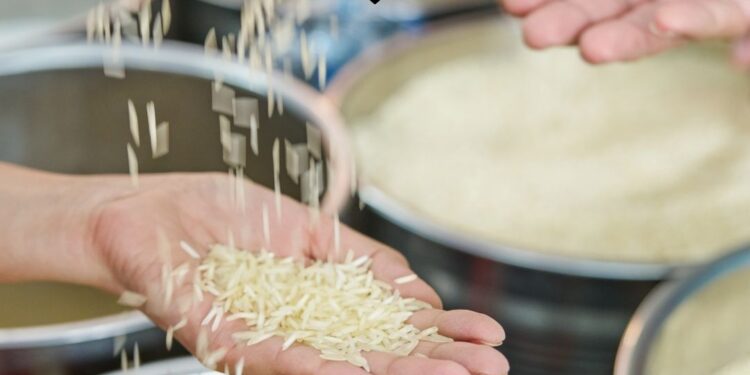Introduction to Rice Exporters in India
India stands as the world’s largest rice exporter, known for supplying premium quality varieties like Basmati and non-Basmati rice to over 150 countries. The country’s diverse climatic zones, vast cultivation land, and deep-rooted agricultural practices make it a global hub for rice production and trade. From small-scale farmers to large export houses, the ecosystem of rice exporters in India plays a vital role in feeding global populations.
This article offers a comprehensive insight into how rice exporters in India operate, the varieties they offer, the quality standards they maintain, and why international buyers prefer sourcing rice from India.
The Rice Export Market in India: A Brief Overview
India exports over 20 million metric tons of rice annually, accounting for more than 40% of the world’s total rice exports. The sector contributes significantly to the country’s economy and supports millions of farmers and supply chain workers.
Major rice export destinations include:
- Middle Eastern countries like Saudi Arabia, UAE, Iran
- African nations such as Nigeria, Benin, Senegal
- Asian countries including Bangladesh, Nepal, and Malaysia
- Western markets like the USA, UK, and Canada
The rise in global demand has led to the growth of well-established rice exporters in India that focus on quality, timely delivery, and customized packaging.
Key Types of Rice Exported from India
Basmati Rice
Basmati is the most recognized aromatic long-grain rice, grown mainly in the states of Punjab, Haryana, and Uttar Pradesh. It is valued for its fragrance, non-stickiness, and long grain length after cooking.
Popular Basmati rice variants:
- 1121 Steam Basmati Rice
- Traditional Basmati Rice
- Pusa Basmati Rice
- Golden Sella Basmati Rice
Most reputed rice exporters in India have a separate export line for Basmati rice due to its global demand and premium pricing.
Non-Basmati Rice
Non-Basmati rice varieties cater to diverse cuisines and daily consumption needs across continents. These include:
- IR 64 Parboiled Rice
- Sona Masoori Rice
- Ponni Rice
- Swarna Rice
Non-Basmati varieties form a bulk of rice exports from the southern and eastern regions of India, especially Andhra Pradesh, Tamil Nadu, Chhattisgarh, and West Bengal.
Why India is a Preferred Source for Rice Imports
1. Climatic and Soil Advantages
India’s vast and varied agro-climatic zones provide favorable conditions for cultivating multiple varieties of rice. From the Himalayan foothills to coastal plains, the diversity ensures continuous and stable production.
2. Experienced Exporters and Supply Chain Strength
The top rice exporters in India have been in the trade for decades. Their experience, global presence, and logistics networks help in meeting large-scale orders with strict delivery timelines.
3. Competitive Pricing
Indian rice is competitively priced in the global market due to low production costs and government support. Even premium rice varieties are more affordable when sourced from India compared to other rice-exporting nations.
4. Government Support and Certification
Rice exports from India are regulated under strict norms. Exporters are required to adhere to quality, fumigation, and pesticide residue limits based on importing country requirements. Agencies like APEDA (Agricultural and Processed Food Products Export Development Authority) provide certifications and help streamline processes.
Top Rice Exporting States in India
Punjab and Haryana
The belt is globally known for high-quality Basmati rice. Most of the premium exporters have their procurement centers or processing plants in these two states.
Andhra Pradesh and Telangana
These states dominate the production and export of Non-Basmati varieties, especially parboiled rice.
Uttar Pradesh and Madhya Pradesh
These states have emerged as strong contributors to both Basmati and Non-Basmati rice exports due to improved irrigation and farming techniques.
How Rice Exporters in India Ensure Quality
The leading rice exporters in India follow a structured process to maintain quality:
- Raw Material Procurement: Direct sourcing from registered farmers to ensure traceability and consistent grain quality.
- Modern Processing Facilities: Use of hi-tech milling machines, color sorters, and de-stoners to ensure purity and grain integrity.
- Hygienic Packaging: Multi-layer packaging in jute, polypropylene, or vacuum-sealed packs to preserve aroma and freshness.
- Lab Testing and Certifications: All batches undergo quality checks for moisture content, broken grain percentage, and pesticide residue.
- Fumigation and Export Compliance: Compliance with phytosanitary norms and country-specific regulations is ensured for smooth customs clearance.
Packaging and Private Label Solutions
Packaging is a critical aspect of the export process. The best rice exporters in India offer:
- Bulk packaging (25kg, 50kg PP/Jute bags)
- Retail-ready packs (1kg, 5kg, 10kg)
- Private labeling with buyer’s brand
- Custom language labels and barcodes as per destination market
These services help global retailers, wholesalers, and importers maintain brand consistency while sourcing directly from India.
Certifications Required for Rice Export
To meet international standards, rice exporters in India maintain a wide range of certifications:
- ISO 22000 / HACCP
- FSSAI (Food Safety and Standards Authority of India)
- BRC Global Standards
- Halal Certification
- Kosher Certification
- SGS or Bureau Veritas inspection reports (on request)
These certifications assure international buyers of food safety, ethical sourcing, and process hygiene.
How to Choose the Right Rice Exporter in India
Here are some points to keep in mind while selecting a supplier:
- Years of Experience: Look for exporters with at least 5–10 years of export history.
- Variety and Customization: Ensure they offer the specific variety and packaging options you need.
- Quality Standards: Ask for lab test reports and recent certifications.
- Delivery Capabilities: Check their handling capacity, port access, and lead time.
- References and Reviews: Always ask for client references or check their export history on government databases like DGFT or APEDA.
Role of Digital Platforms and Trade Fairs
Modern rice exporters in India also use digital trade platforms such as:
- IndiaMART
- TradeIndia
- Alibaba
- APEDA AgriExchange portal
Additionally, exporters participate in trade fairs like Gulfood (UAE), Anuga (Germany), and WorldFood (Russia), which help build global buyer networks and showcase the strength of Indian rice.
Future of Rice Export Industry in India
The global demand for rice is expected to grow with rising populations and urbanization in Africa and Asia. Rice exporters in India are poised to benefit from:
- Digital supply chains
- Export incentives
- Direct farmer tie-ups
- Warehousing and port connectivity enhancements
With a strong foundation and market presence, India is expected to remain the leader in the global rice export trade for years to come.
Final Thoughts on Rice Exporters in India
India’s leadership in the global rice export market is built on quality, variety, and strong supply chains. The top rice exporters in India offer reliability, cost advantage, and world-class packaging that cater to diverse international markets.
Whether it’s Basmati for Middle Eastern households or IR 64 for African importers, Indian rice continues to win global trust. For importers, sourcing from India not only ensures quality but also a steady supply backed by decades of agricultural heritage and export expertise.
If you’re a global buyer or a wholesale distributor looking to partner with trusted rice exporters in India, the choices are vast, and the potential is unlimited.












